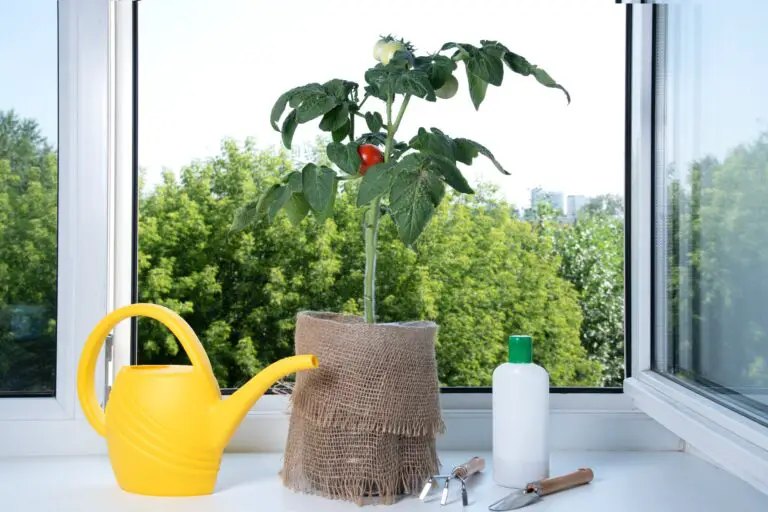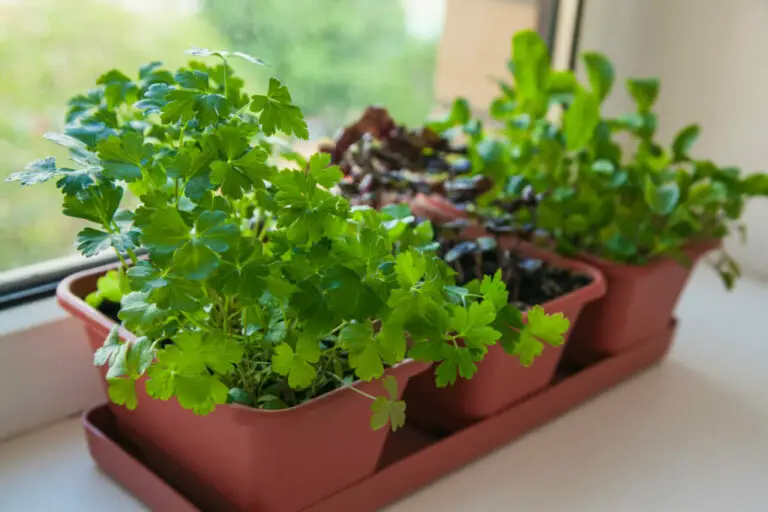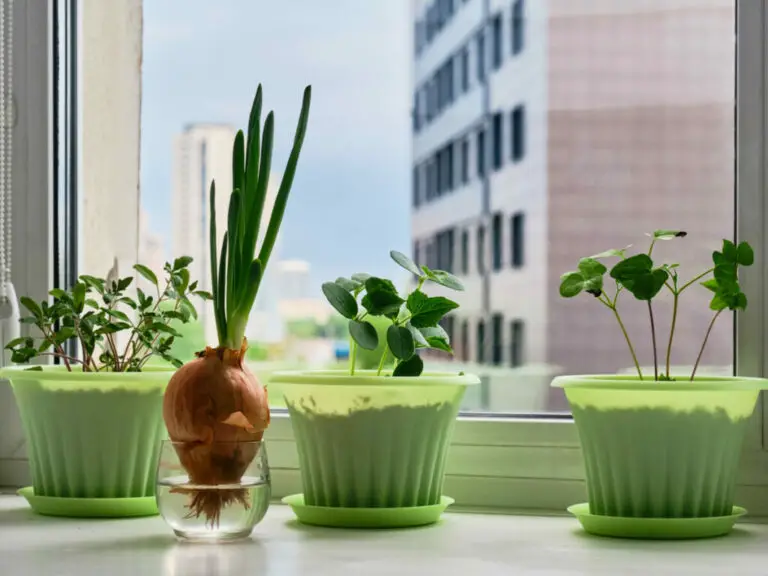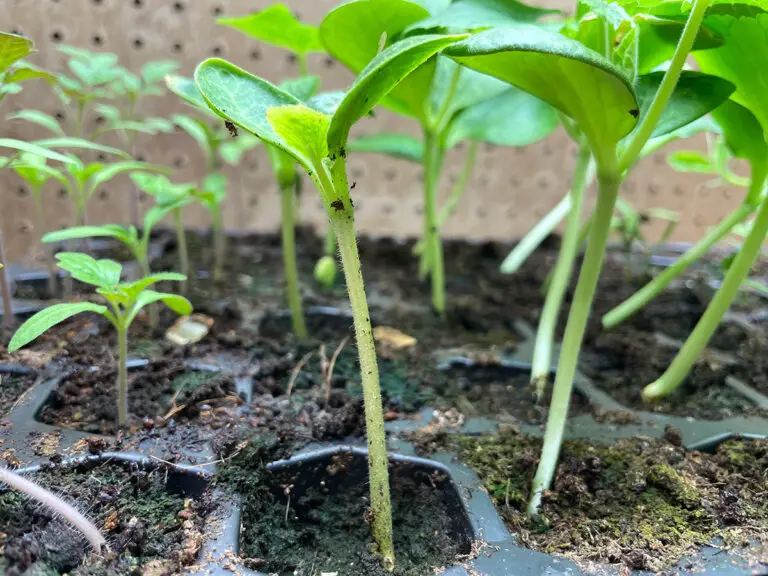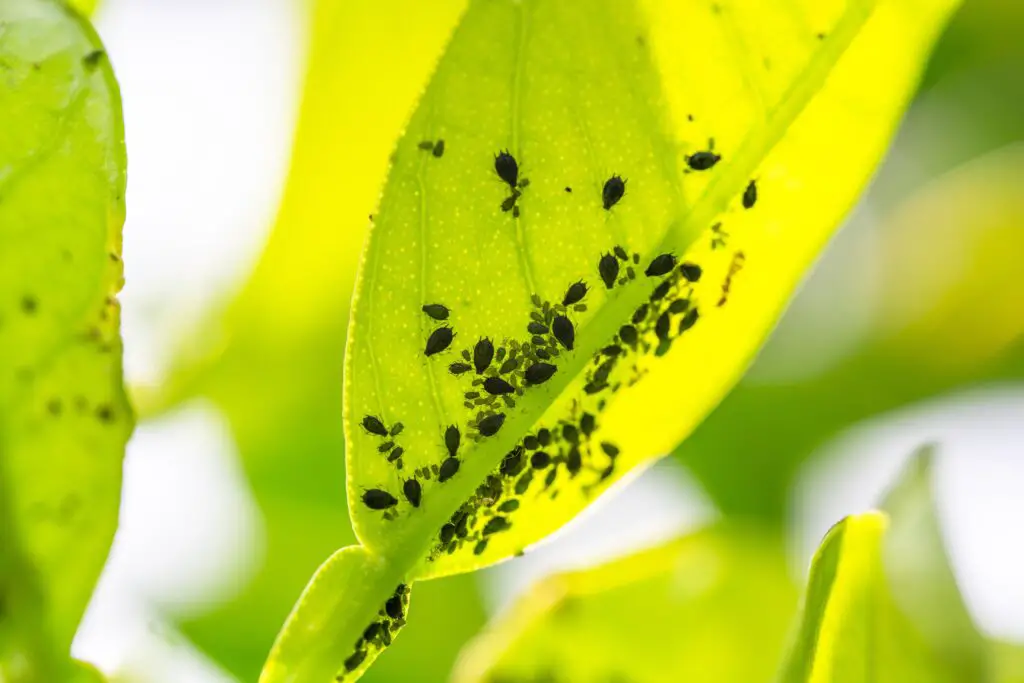
Bugs are the biggest hangup for most of us when it comes to having indoor plants, but don’t let the fear of these pests stop you from starting an indoor garden. It’s possible to stop them and even prevent them before they’re a problem. So, what are the common bugs found near indoor gardens, and how do you stop them?
Using neem oil in an indoor garden can limit the number of pests. Various organic or non-organic pesticides can also be used. There are seven main pests that find their way into indoor gardens such as aphids, mealybugs, whiteflies, fungus gnats, spider mites, scale, and thrips.
There are a lot of suggestions on how to limit the number of bugs that are attracted to your indoor garden, which can make finding the right fit for your situation overwhelming. Since there are so many kinds of bugs that find their way to your indoor garden, it can be difficult to know the right way to get rid of them. Here is how to figure out which bugs you have, or are at risk of having, and how to get rid of them!
Common Pests for Indoor Gardens
Before you decide to start an indoor garden, it can be beneficial to learn about all of the potential pests that can are likely to be attracted to common indoor plants.
The first of these common pests are aphids. This type of bug is commonly seen on a large variety of plants, both indoors and outdoors. They feed on the sap that is produced by a large variety of plants. Aphids are small green or brown bugs that have hard bodies. Because this insect feeds off of the sap of plants, it can be dangerous for your indoor garden. Aphids will move from one plant to the next after they have run out of sap to feed on.
The next commonly seen pest is the mealybug. These are round, white, and wax-covered bugs that are often found on most indoor plants. These small bugs are often found in soft-stemmed plants. This makes them common pests for indoor gardens and houseplants. Mealybugs living off of different parts of various houseplants can result in your indoor garden not being as successful as it could be. If you grow herbs indoors, you will likely encounter mealybugs.
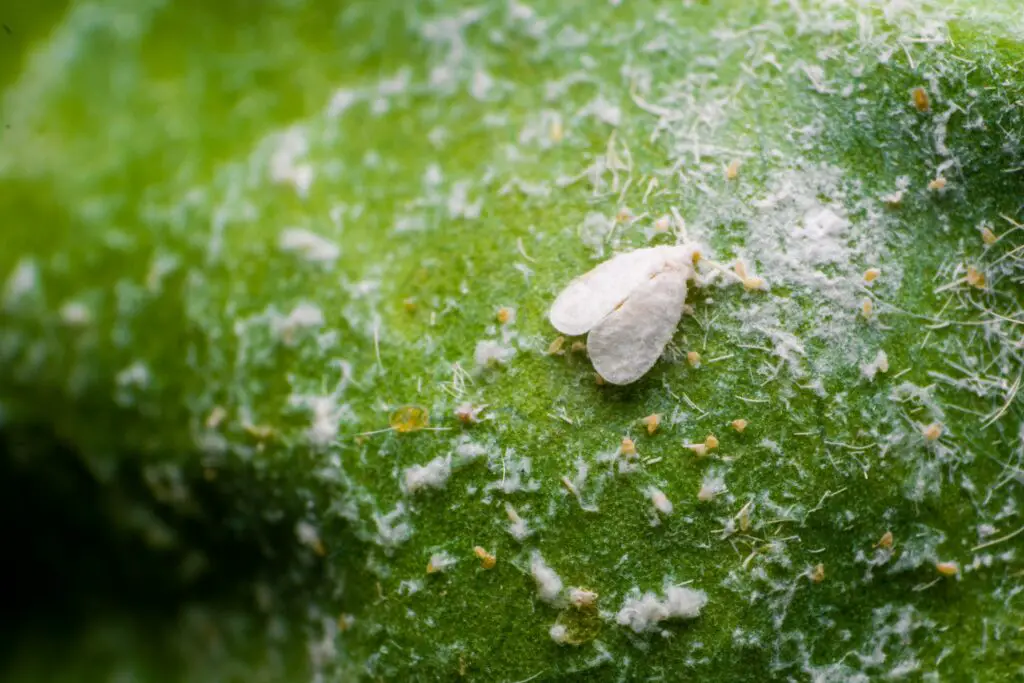
Whiteflies are another type of bug that can often be found near indoor plants. Despite its name, this insect is not part of the fly family, they are actually more similar to both mealybugs and aphids. These bugs live on the sap that is produced by many different plants. Whiteflies are commonly found on vegetables, which is one of the common reasons they will appear in indoor gardens. Whiteflies will continue to feed off your indoor garden, moving from one plant to the next until your garden is no longer thriving.
Gnats are a type of bug that many of us are familiar with. There is a specific type of gnat that is often found near indoor gardens. The fungus gnat is one of the most common indoor garden pests. These gnats often feed on nutrients within the soil that is used in an indoor garden.
In addition to the soil, fungus gnats can feed off the roots of plants within a home, which results in these plants eventually dying. Not only do fungus gnats feed off of any fruits, vegetables, or other herbs that may be growing within a home, but they also feed off of any plants that they can find nearby.
If you have an indoor garden, it’s possible that if you don’t properly care for your plants you might experience spider mites. This is an insect that is commonly found living off of plants both indoors and outdoors. Spider mites feed off the leaves of these plants. These are extremely tiny bugs, so most don’t even notice when their plants have them until the entire plant is infected. Spider mites mostly feast on vegetables like cucumbers, lettuce, and tomatoes.
The scale bug is the most destructive pest to indoor gardens. Unlike the other pests, scale bugs eat all parts of the plants and reproduce extremely fast. This results in an infestation happening more quickly than some of these other pests, which can make it difficult to get rid of them.
This specific pest excretes honeydew, which allows a large amount of mold to begin growing on the plants. So not only do these bugs repopulate quickly and devour large portions of the plants, but it also increases the likelihood of black mold forming on your houseplants. No one wants black mold in their home, so it is important to get rid of scale bugs as soon as possible.
Thrips are extremely tiny and are found living off of plants throughout all parts of the world. These insects cause damage to indoor gardens by sucking the nutrients out of the plants they are feasting on. In addition to feasting on your indoor garden, thrips can transmit viruses to the plants they are eating. It can be extremely difficult to identify when thrips are sucking nutrients from your plant because of their size, as these insects will appear as small black dots on the leaves of your plants.
These are the most common insects that are attracted to indoor gardens, but there are other insects that may appear. There are different types of gnats and other small flies that may appear near the plants throughout your garden, however, these insects are typically easier to treat than the other, more well-known pests.
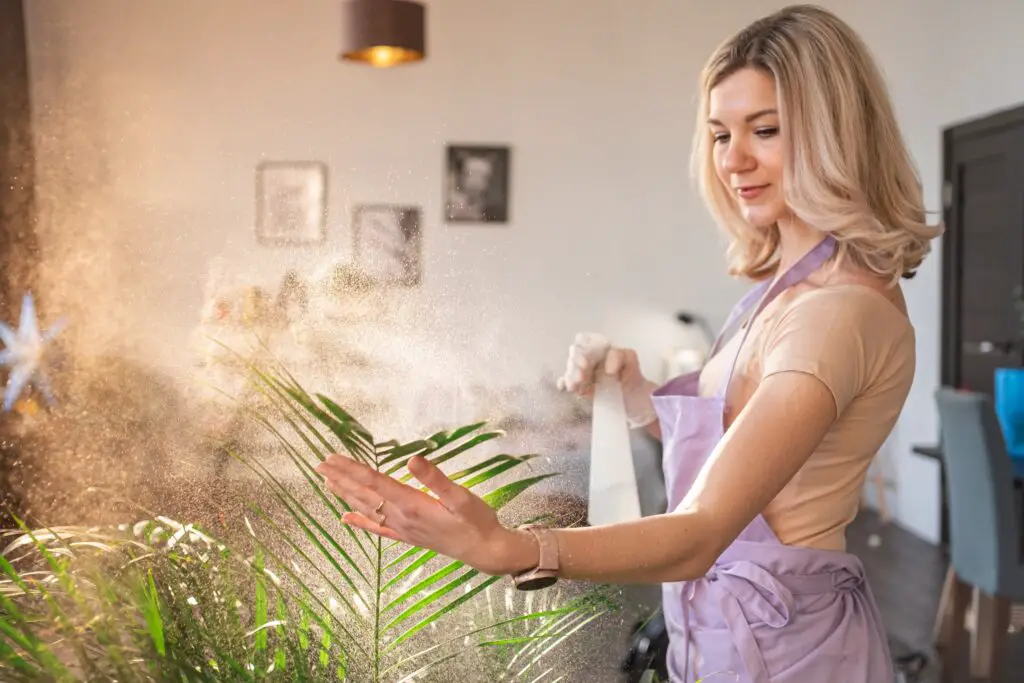
How to Treat Pests Without Chemicals
There are several methods to treat pests on indoor plants. There are some store-bought products that can help you quickly treat your pest problem, but there are also some at-home alternatives that may help you address your pest issue without having to spend too much money on a solution.
If you start to notice bugs begin handpicking them out of your indoor garden because you might be able to catch them before a complete infestation starts. In instances where there are more than just a few, it is important that you start treating your plants before the situation gets out of control.
The easiest way to remove pests from your houseplants in the early stages of infection is by simply spraying the infected area with water. Many of the pests that are harmful to household plants aren’t able to survive contact with water. If you can spray water before the pests have been able to reproduce and infect other plants then you have the best chance to easily remove the issue. But this method usually takes more than one treatment to completely remove the pests.
Water doesn’t always work. When water isn’t able to help treat the pests in your indoor garden, you might be able to use insecticidal soap which is most effective for soft-bodied insects. If the insects are hard-bodied, there is a chance that insecticidal soap will not affect them, however, there are other methods for treating these pests. Similar to using water, insecticidal soap is most effective when used over multiple treatments.
There are some instances when the pests in your indoor garden require you to use pesticides. Some pesticides are stronger than others, so use one that you are comfortable using in your home. You can also spray a gentle pesticide on the soil of your indoor garden before pests appear to keep them from infecting your plants.
Treating Pests with Stronger Pesticides
If non-chemical treatments are not effectively treating the pests in your indoor garden it might be time to consider more potent pesticides. Before you use a pesticide check the label to see which types of insects it is most effective on.
It’s also ver important to check the label on the bottle to make sure it is safe to be used indoors. A lot of pesticides are for outdoor use only. Using indoor pesticides allows you to ensure that your indoor garden will not negatively affect your health or the health of your loved ones. And if you have pets, make sure the pesticide you use won’t harm them either.
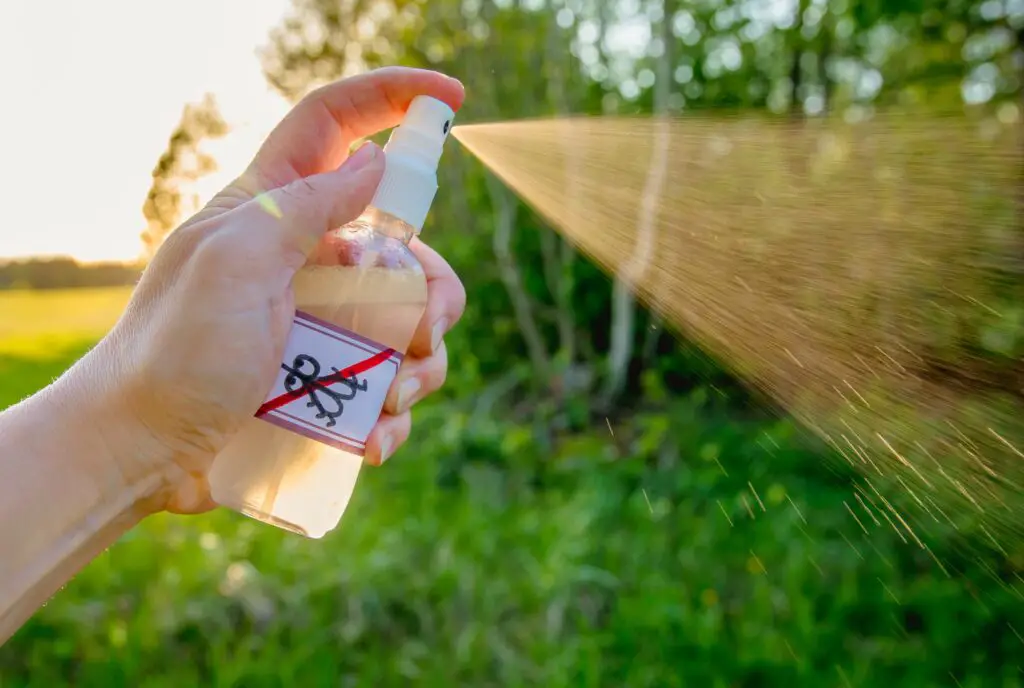
How to Prevent Indoor Garden Pests
In some instances, it is best to take extra steps to try to prevent pests from getting into your indoor garden. The time of the year can determine which method of preventing these pests will be most effective.
When it comes to preventing pests in indoor gardens, the easiest method is to simply check your plants for any bugs or pests regularly. That way you can easily catch any pests at the beginning stages of infecting your plants, and they’ll be easier to remove.
In warmer weather, simply moving your indoor garden outdoors in the shade can prevent an infestation from occurring. When outdoors, there is a chance that any bugs on the plants will jump off and move to another source of nutrients.
Spraying neem oil on the plants in your indoor garden can also help. A lot of the pests don’t like the smell of neem oil so they’ll decide not to feed on your plants. Not only will this decrease the chance of the pests moving from one plant to the next, but it also can help remove the pests that are already present on a plant.
What Conditions Attract Indoor Plant Pests?
For many pests, it is the warm and humid conditions of an indoor garden that is appealing. Similar to other bugs, it is possible that the warm, humid conditions in which most plants thrive are causing these pests to want to find a shelter or source of nutrients.
Another factor is the location of the indoor garden. If the plants are located near large windows or a larger doors that are often open, pests will likely be attracted to them because they can easily come inside and find a new food source where there won’t be predators nearby.
Overall, many pests can negatively affect your indoor garden, but there are things you can do to remove them before they negatively affect your plants.



